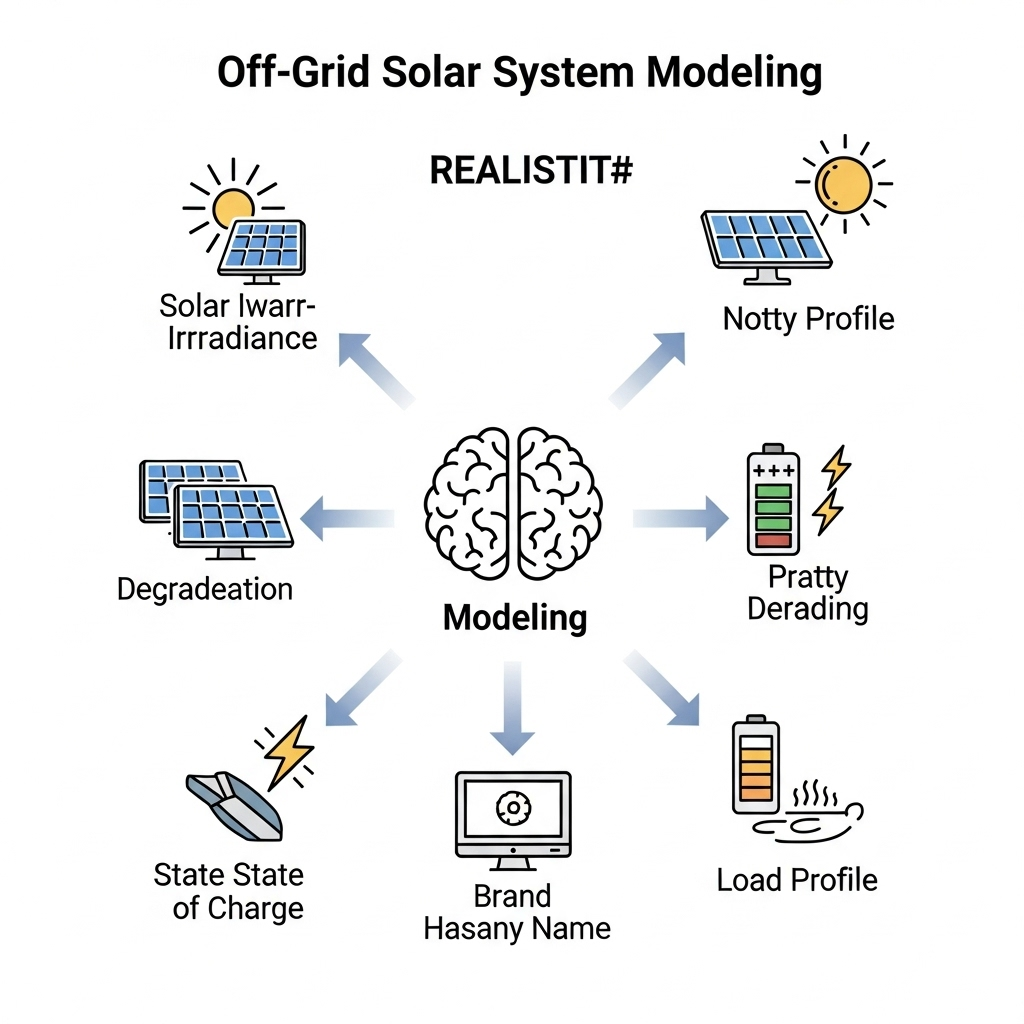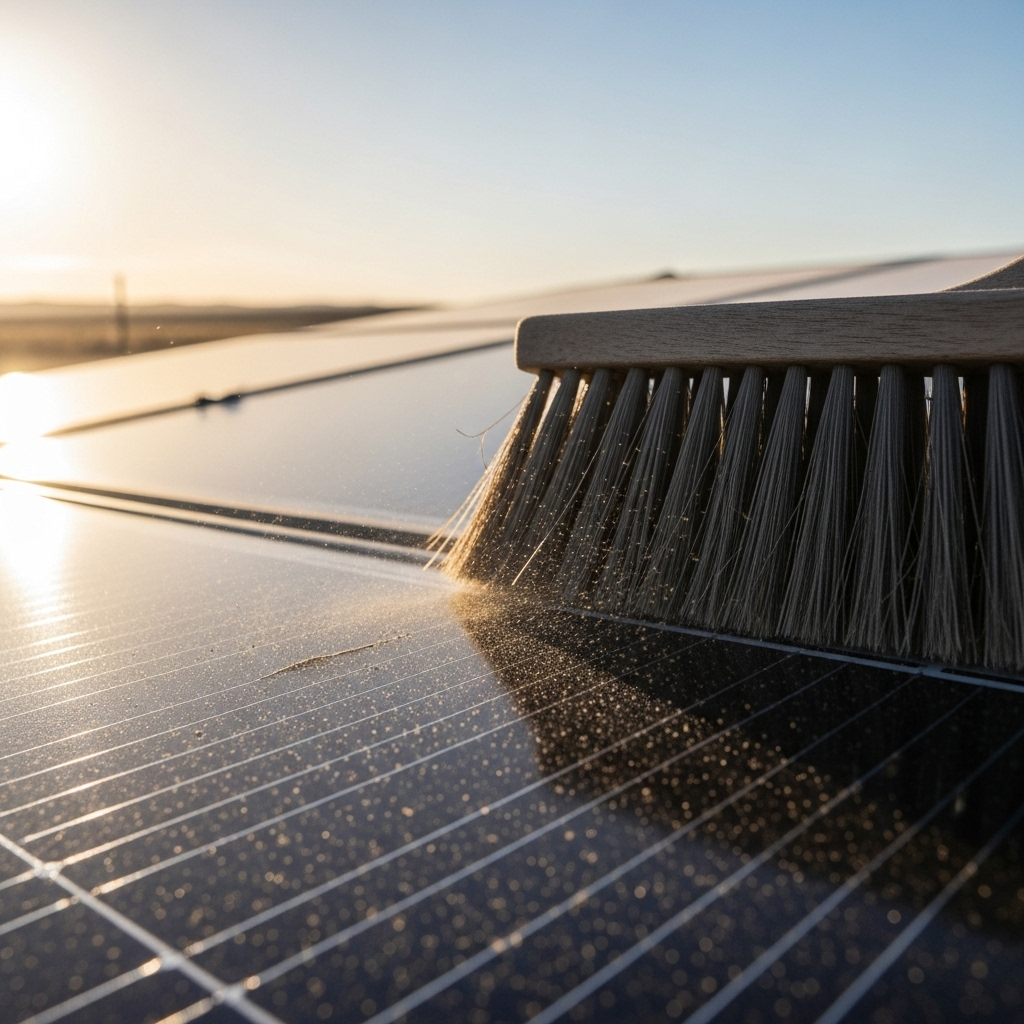Living off-grid provides true energy independence, but this freedom comes with responsibility. Your solar array is the heart of your power system, and its performance directly impacts your daily life. Dust, pollen, bird droppings, and other debris can accumulate on your panels, significantly reducing their ability to generate power. This not only limits your available energy but also puts unnecessary strain on your valuable lithium battery storage. A proactive approach to cleaning and inspection is vital for a reliable and long-lasting off-grid power system.
This guide provides a detailed, safety-focused process for maintaining your off-grid solar panels. You will learn how to clean them effectively and what to look for during an inspection to catch potential issues before they become major problems.
Why Regular Maintenance is Crucial for Your Off-Grid System
Consistent maintenance is not just about keeping things looking good. It is a fundamental practice that directly influences your system's output, longevity, and safety. For an off-grid setup where every watt counts, these benefits are even more pronounced.
Maximizing Energy Production
The buildup of dirt and grime on a panel's surface, known as soiling, blocks sunlight from reaching the photovoltaic cells. Even a thin layer can have a surprising impact. Studies and field data show that soiling can reduce a panel's efficiency by anywhere from 5% to over 25% in particularly dusty or polluted environments. For an off-grid home, a 25% loss in production could be the difference between running your appliances comfortably and having to start a backup generator. Consistent cleaning ensures you are harvesting every possible watt of sunlight, which is especially important for keeping your LiFePO4 batteries properly charged and avoiding deep discharge cycles that can shorten their lifespan.
Protecting Your Investment
A solar power system is a significant investment. Regular inspections are your first line of defense against premature failure. By visually checking your panels and mounting hardware, you can spot early signs of trouble like cracks, moisture intrusion, or loose connections. Addressing a small issue, like tightening a loose bolt on the racking, can prevent catastrophic damage during a windstorm. Early detection protects not only the panels but the entire ecosystem, including your inverter and high-performance lithium battery.
Ensuring System Safety
Safety should always be a top priority. Damaged panels or frayed wiring are more than just an efficiency problem; they are serious electrical and fire hazards. An exposed wire can lead to short circuits or arcing, while a cracked panel can allow moisture to create a dangerous electrical situation. Regular inspections help you identify and mitigate these risks, ensuring your off-grid home remains a safe haven.
Safety First: Preparing for Panel Maintenance
Before you touch a single panel, preparing correctly is the most important step. Rushing this process can lead to personal injury or damage to your equipment. Always prioritize safety over speed.
Essential Safety Gear and Precautions
Your personal safety is non-negotiable. Always use the appropriate gear:
- Non-slip footwear: Provides stable footing, even if the ground is wet.
- Sturdy gloves: Protect your hands from sharp edges on the panel frames or mounting hardware.
- Safety glasses: Shield your eyes from debris or cleaning solution splashes.
- Safety harness: If your panels are on a roof or elevated structure, a harness is mandatory. Never work on a roof without proper fall protection.
Before you begin, you must shut down your solar system completely. This typically involves switching off the DC disconnects between the panels and the charge controller, as well as the breakers for the inverter. This isolates the panels electrically, minimizing the risk of shock. Consult your system's manual for the specific shutdown procedure.
Disclaimer: This information is for educational purposes only and does not constitute professional electrical advice. Always follow the manufacturer's instructions for your specific equipment and consult a qualified electrician if you are unsure about any procedure.
Choosing the Right Time and Conditions
Timing is everything. The best time to clean solar panels is on an overcast day or during the early morning or late evening. When the sun is high and intense, panels can become extremely hot. Spraying cold water onto hot glass can cause thermal shock, potentially leading to microcracks. Cleaning when the panels are cool is safer for you and the equipment.
The Step-by-Step Guide to Cleaning Your Solar Panels
With safety preparations complete, you can move on to the cleaning process. Using the right tools and techniques will ensure a spotless finish without damaging the panels.
Gathering the Right Tools
Harsh methods can do more harm than good. Avoid abrasive scrubbers, harsh chemical detergents, and high-pressure washers, which can scratch the glass, damage the anti-reflective coating, or force water past the seals. Your toolkit should include:
- A hose with a spray nozzle that can deliver gentle, low-pressure water.
- A soft-bristle brush or cloth, preferably on an extension pole to avoid reaching.
- A plastic squeegee for a streak-free finish.
- A bucket and a small amount of gentle, biodegradable soap if needed for stubborn grime.
The Cleaning Process
- Initial Rinse: Start by gently spraying the panels with water to wash away loose dust and debris.
- Gentle Scrub: If grime remains, use the soft brush and a bucket of clean water (or very mild soapy water) to gently scrub the panel surface. Work from top to bottom.
- Thorough Rinse: Spray the panels again to completely remove all soap residue. Leftover soap film can attract more dirt.
- Squeegee Dry: For the best results, especially in areas with hard water, use a squeegee to remove excess water. This prevents mineral spots from forming as the panels dry.
Special Considerations for Off-Grid Locations
Water can be a precious resource in many off-grid settings. If water is scarce, you can perform a 'dry clean' for light dust using only a soft brush. For heavier soiling, plan your cleaning to coincide with expected rainfall, letting nature do the initial rinse for you. Always ensure you have all necessary tools on-site before starting, as a trip to the store is often not a quick option.
Conducting a Thorough Visual Inspection
While you are cleaning, take the opportunity to perform a detailed visual inspection of your entire array. This is the perfect time to spot developing issues.
What to Look For on the Panels
Examine the surface of each panel closely. Pay attention to any physical changes, as they can indicate underlying problems that affect performance and safety.
| Issue to Check | Visual Cue | Potential Impact |
|---|---|---|
| Glass Cracks or Chips | Visible fractures, 'spiderwebs', or impact marks | Moisture ingress, reduced output, safety hazard |
| Discoloration | Yellow or brown spots on cells (burn marks) | Hotspots, cell failure, significant power loss |
| Delamination | Bubbling or peeling of the backsheet or layers | Moisture damage, corrosion, electrical failure |
| Moisture Ingress | Fogging or condensation visible under the glass | Internal corrosion and imminent panel failure |
Checking the Mounting and Wiring
Your inspection should not stop at the panels. The supporting infrastructure is just as important. Check the mounting rack for any loose bolts, signs of corrosion, or structural damage. Wiggle the structure gently to ensure it is secure. Next, inspect all visible wiring. Look for any signs of fraying, cracking, or damage from animals. Ensure all connections are tight and that junction box covers are securely in place. As the International Energy Agency (IEA) notes, stable and secure connections are critical for system reliability. This principle is just as true for your personal off-grid power plant. The integrity of these connections is fundamental to system efficiency, a key factor detailed in the ultimate reference for solar storage performance.
Securing Your Energy Independence
By integrating this safe and simple maintenance routine into your schedule, you are taking a powerful step toward ensuring the long-term health of your off-grid system. A clean and well-inspected solar array will generate more power, reduce the burden on your lithium battery bank, and minimize the need for backup power sources. This proactive care is the key to unlocking the full potential of your investment and enjoying true, uninterrupted energy independence for years to come.
Frequently Asked Questions
How often should I clean my off-grid solar panels?
The ideal frequency depends heavily on your local environment. In dusty, agricultural, or high-pollen areas, you may need to clean them monthly or even more often. In cleaner environments, a few times a year may be sufficient. The best approach is to monitor your system's output. If you notice a gradual, unexplained drop in power generation, it's likely time for a cleaning.
Can I use regular window cleaner on my solar panels?
It is not recommended. Many household window cleaners contain ammonia or other harsh chemicals that can damage the anti-reflective coating on the panel glass and may even harm the frame's seals over time. It is always safest to use plain water or a cleaner specifically designed for solar panels.
What happens if I don't clean my panels?
You will experience a significant drop in energy production. Over time, this sustained underperformance puts extra stress on your battery system, as it may not receive a full charge each day. This can lead to more frequent reliance on a backup generator, increased fuel costs, and a potentially shorter lifespan for your batteries.
Is it safe to walk on solar panels?
Absolutely not. Never walk or place heavy objects on your solar panels. This can cause invisible microcracks in the solar cells. While you may not see the damage, these cracks will disrupt the flow of electricity, severely degrading the panel's performance and eventually leading to its complete failure.





Leave a comment
All comments are moderated before being published.
This site is protected by hCaptcha and the hCaptcha Privacy Policy and Terms of Service apply.